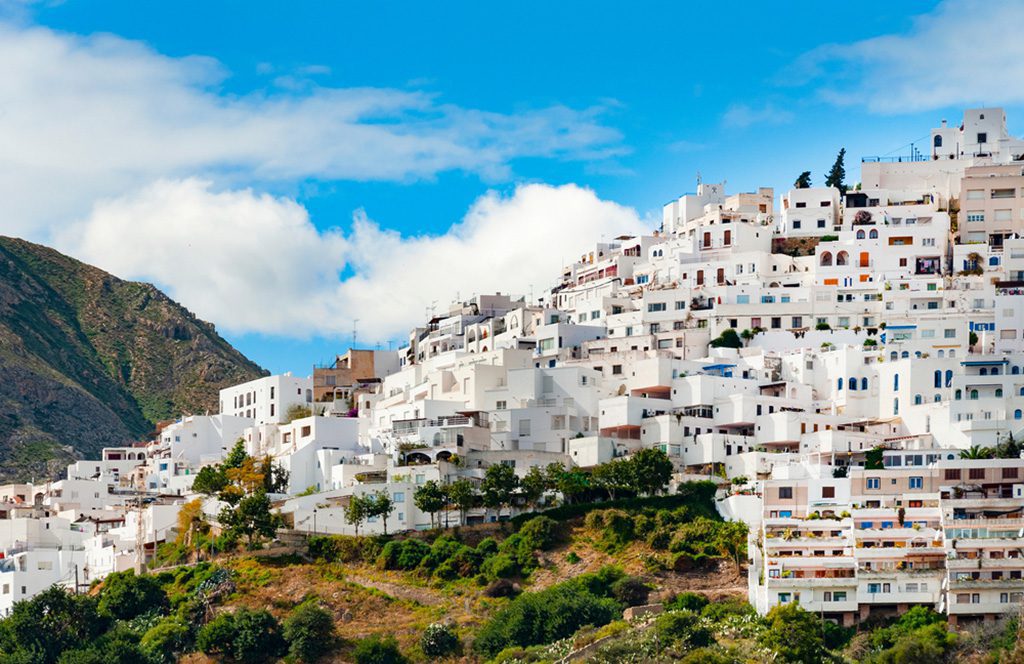Spain, a dynamic European country that shares the Iberian Peninsula with Portugal, is well-known for its passionate people, beautiful beaches, and great history. You can’t go to Spain and not see the big cities like Madrid and Barcelona, but don’t skip out on the smaller towns that have just as much to offer. These Spanish towns are often more affordable than larger cities and provide a more genuine experience of the country’s culture. If you’re planning a vacation to Spain, be sure to include some of these great little towns.
14. Besalu
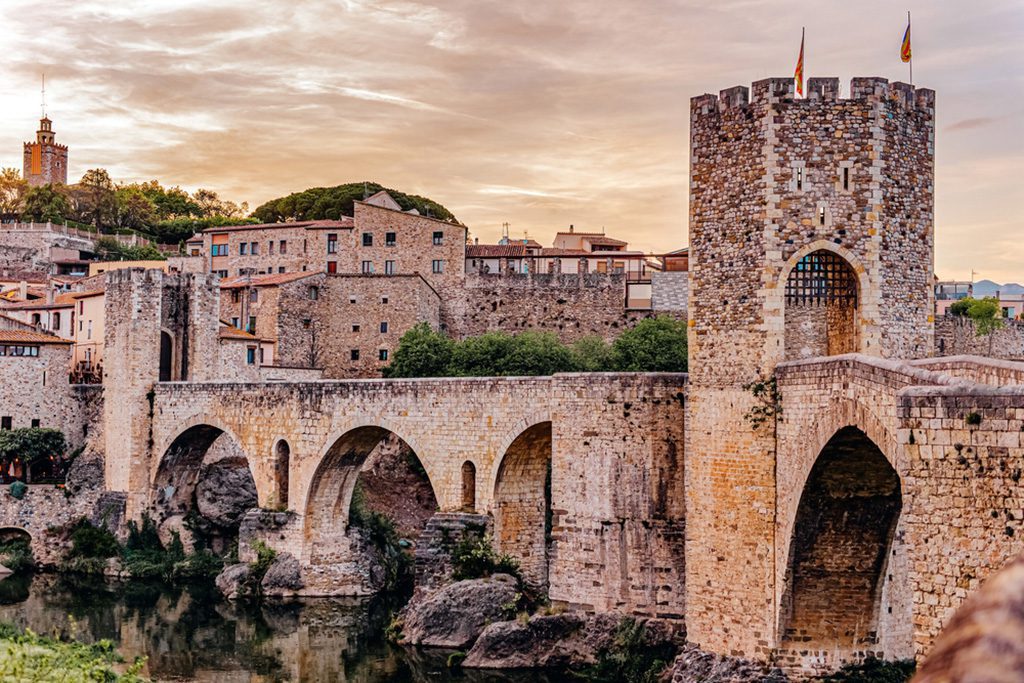
A stunning view of Besalu, a medieval town in Catalonia, Spain. Image source: Yurina_Photo/Shutterstock.com
Besalu is the best place in Spain to visit if you want to imagine what the country looked like in the Middle Ages. Besalu, in Catalonia, is an easily navigable old center. Don’t miss the old Jewish synagogues and the 11th-century Church of Sant Pere, as well as the spectacular Romanesque bridge that crosses the Fluvià River and seems like it was built yesterday. The bridge is closed to traffic, so you can stroll over and get some amazing shots of the sleepy medieval town below.
13. Deia

A serene view of the mountain village of Deia on the island of Majorca, Spain. Image source: vulcano/Shutterstock.com
In the middle of the Serra de Tramuntana Mountains on the Spanish island of Mallorca is the picturesque village of Deià. Expats have always been drawn to the village, which is situated on dramatic cliffs overlooking the Mediterranean Sea and is surrounded by innumerable olive groves. If you’re a fan of literature, you’ll adore seeing Robert Graves’s former house, which is now available to the public and located in Deià. Cala de Deià, a stunning inlet along the coast, is located in Deià and can only be reached on foot.
12. Ainsa

A beautiful view of Ainsa, an authentic mountain village in Aragon, Spain. Image source: leoks/Shutterstock.com
Ansa is a medieval town located in the foothills of the Pyrenees. The Ansa Castle, located at one end of Plaza de San Salvador, is without a doubt the most impressive structure in this town. The oldest sections of the castle date back to the 11th century, but the majority were constructed in the 16th century. The Espacio del Geoparque de Sobrarbe and the Ecomuseo, both dedicated to educating visitors about the Pyrenees, can be found in two of the castle’s towers.
11. Cudillero
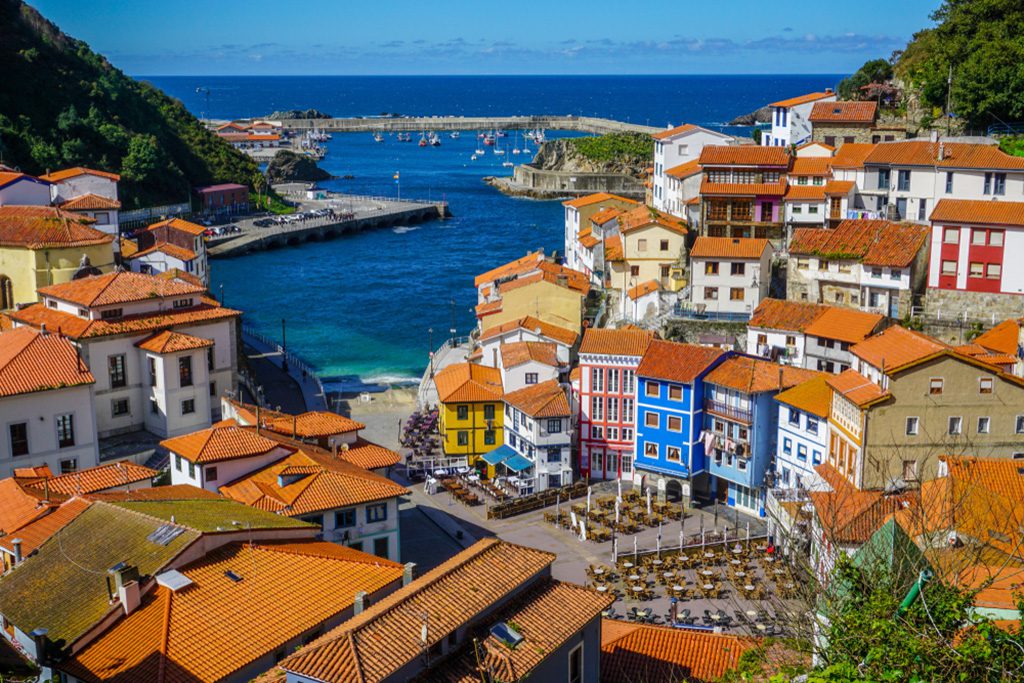
A stunning panoramic view of Cudillero, a picturesque seaside village in northern Spain. Image source: TravelKiwis/Shutterstock.com
Cudillero, a formerly sleepy fishing village on Spain’s northern coast, is now a popular destination for beachgoers and seafood lovers who don’t want to deal with the crowds. The Fundacion Selgas-Fagalde palace grounds and the old Iglesia El Pito church are two of the many impressive structures seen from this vantage point across the Bay of Biscay. Cudillero is home to stunning natural beauty, with highlights being the lookout at Cabo Vidio and the clear waters of Playa del Silencio Beach.
10. Castellfollit de la Roca
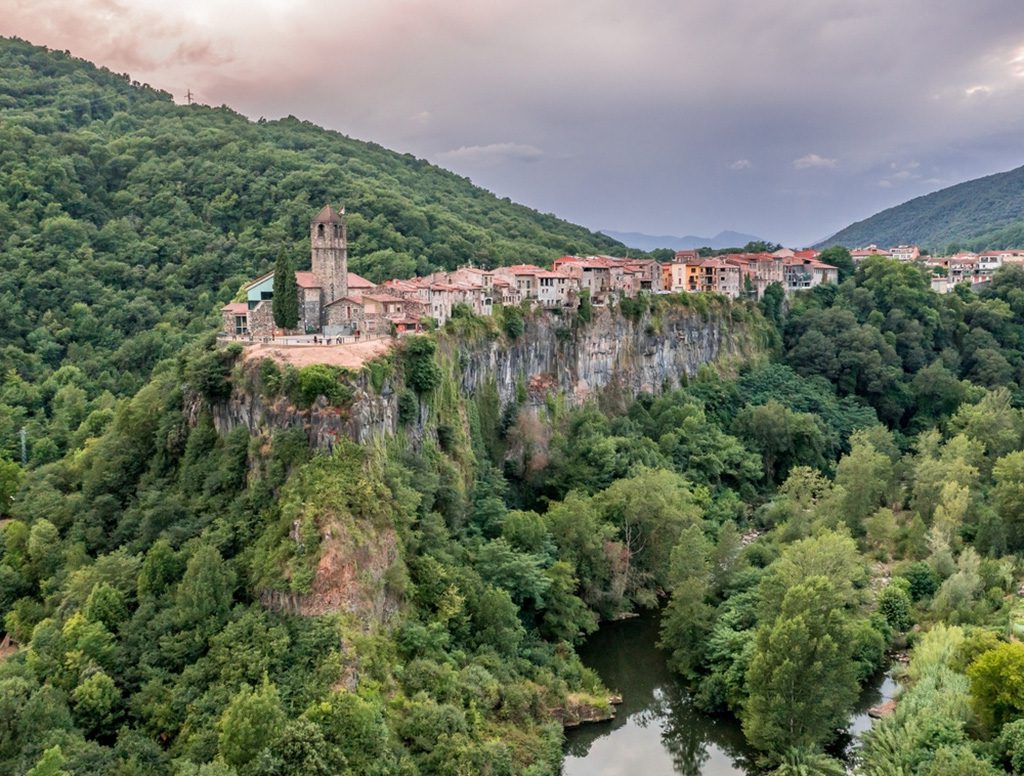
A stunning aerial view of Castellfollit de la Roca, a village in Catalonia, Spain. Image source: mikemike10/Shutterstock.com
At the confluence of the Fluvià and Toronell Rivers, a basalt cliff has emerged. An entire town has been built on this cliff, which was formed by ancient lava flows. Stop and snap pictures as you approach Castellfollit de la Roca; the best vantage point is really below the town looking above. Spend some time at Castellfollit de la Roca, a town built into the side of a basalt cliff, and see its famous Broken Bridge and Sant Salvador Church, both of which date back to the 13th century.
9. Olite
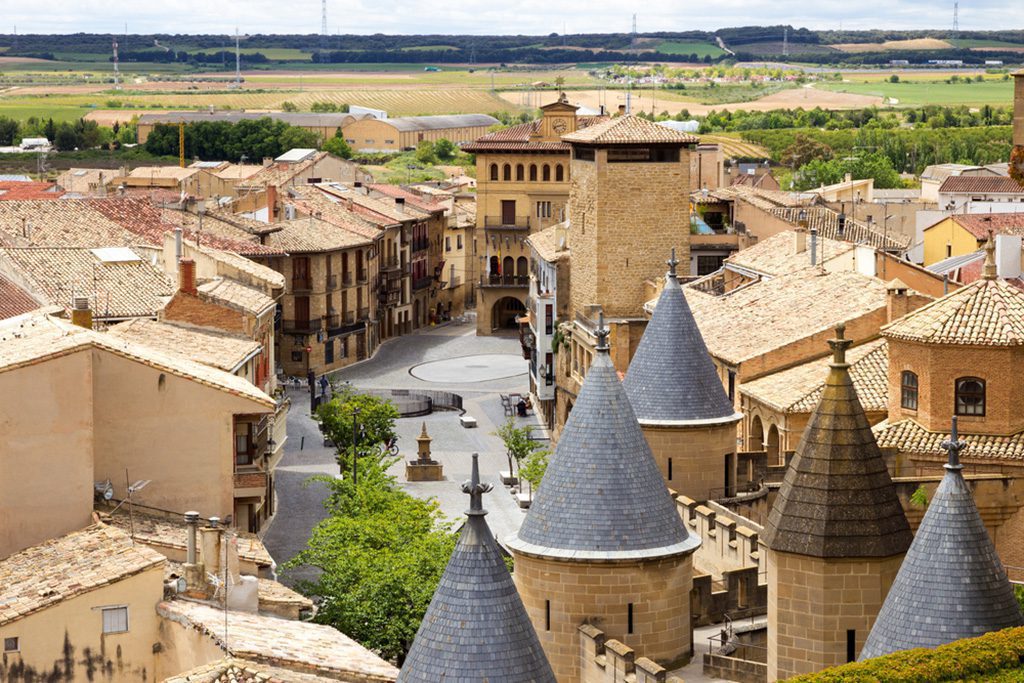
A stunning aerial view of Castellfollit de la Roca, a village in Catalonia, Spain. Image source: VanderWolf Images/Shutterstock.com
The ancient town of Olite can be found in the northern Spanish province of Navarra. According to recorded history, the Visigoths established Olite in the seventh century, although the town didn’t completely flourish until the 12th century. The magnificent Gothic Palacio Real de Olite dates back to the 13th century and was the official residence of King Charles III of Navarre. In addition to the Museo del Vino and the Galerias Medievales Museum, other attractions in Olite include the Iglesia de Santa Maria la Real and wine sampling.
8. Morella
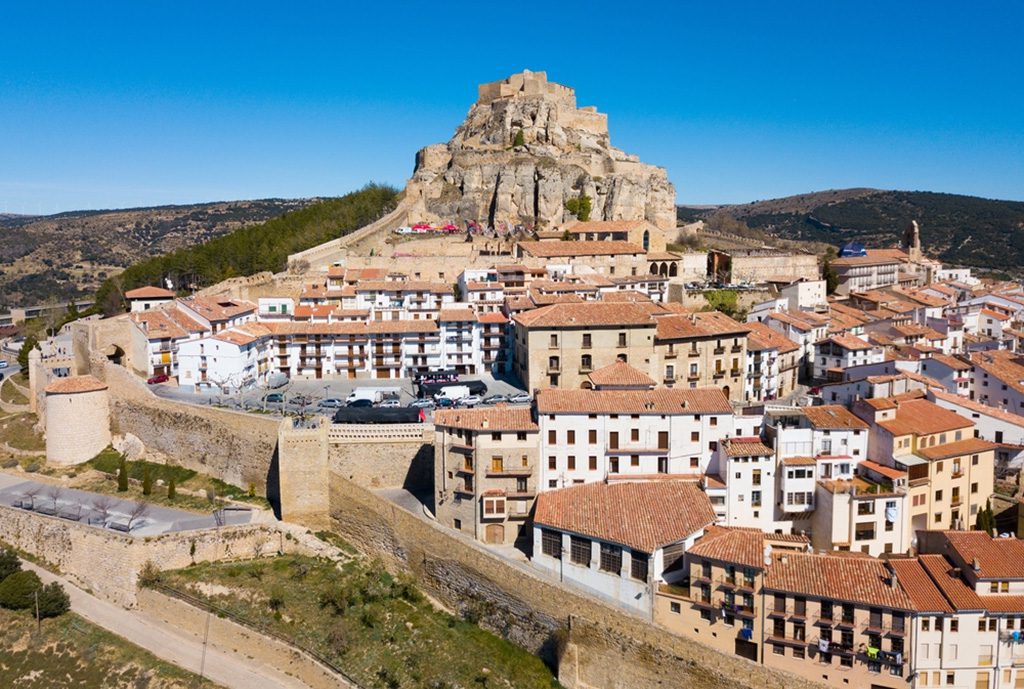
A stunning aerial view of Morella, a walled city with a medieval castle on a rocky hilltop in Castellon, Spain. Image source: BearFotos/Shutterstock.com
Located in the heart of Castellon, the ancient city of Morella is surrounded by massive walls. Morella Castle, the Gothic Santa Maria la Mayor Basilic Church with its incredible, elaborate interiors, and the medieval Morella Walls are some of the city’s top architectural and historical attractions. Flaons, sweet pastries stuffed with cheese, are a popular dessert option and a regional delicacy. Morella can also be used as a jumping off point for trips into the nearby Maestrazgo Mountains.
7. Casares
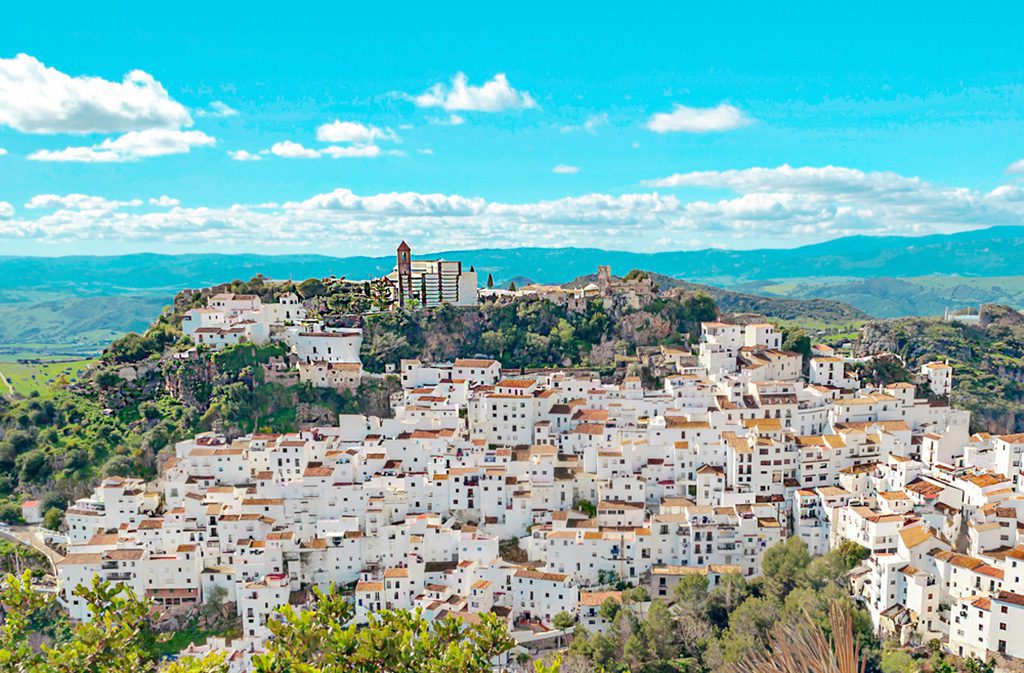
A stunning view of Casares, a village nestled in the mountains of Andalusia, in the south of Spain. Image source: GranTotufo/Shutterstock.com
Casares, in the province of Málaga, is well-known for the Moorish-style whitewashed structures that cling to the cliffs above the Alboran Sea. If you’re interested in architecture, you should also visit the Church of La Encarnacion and the beautiful Casares Castle, both of which date back to the 13th century. You may ride horses on the beach or join a group that does so, since this is a popular activity in the region. For those who would rather hit the links than the beach, there are a number of local courses where they can play a round in the warm Spanish weather.
6. Alquezar
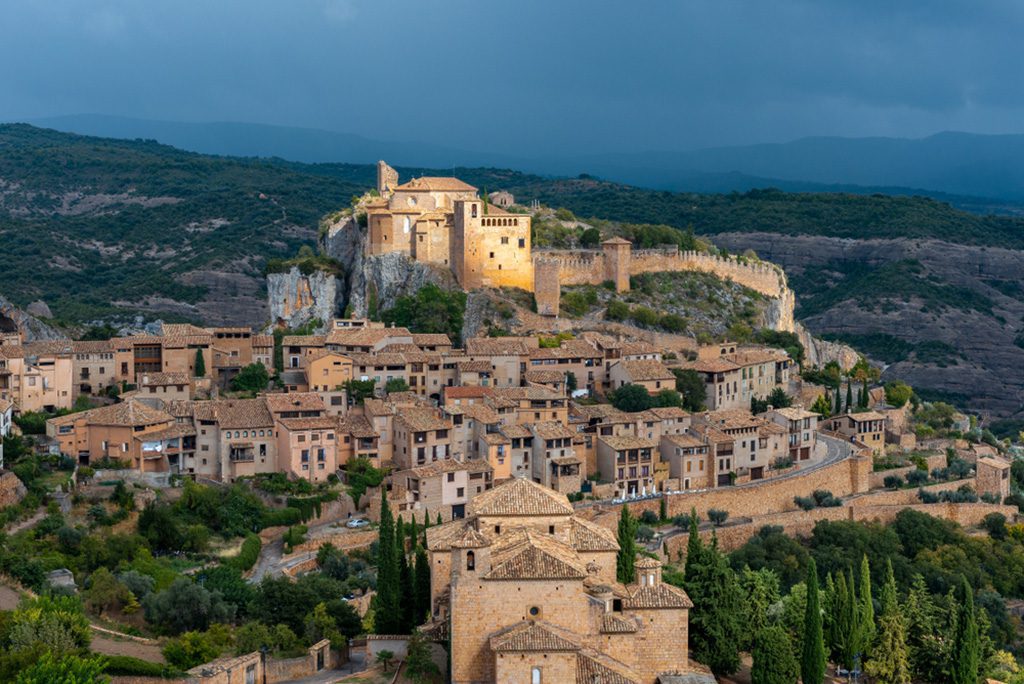
A beautiful view of Alquezar, a medieval village located in the Huesca province of Spain. Image source: Alberto Loyo/Shutterstock.com
Located in the northern Spanish province of Aragon, Alquézar is a popular destination for outdoor enthusiasts. Alquézar, which dates back to the 11th century and is perched on a jutting outcrop of limestone, is home to just a few hundred residents. Attractions in modern-day Alquézar include the chance to enjoy the outdoors, learn about the region’s history at the Colegiata de Santa Mara la Mayor Museum, and marvel at the town’s ancient buildings. A number of popular activities take place in the Ro Vero Canyon, including hiking, canyoning, birdwatching, and even quad biking.
5. Cadaques
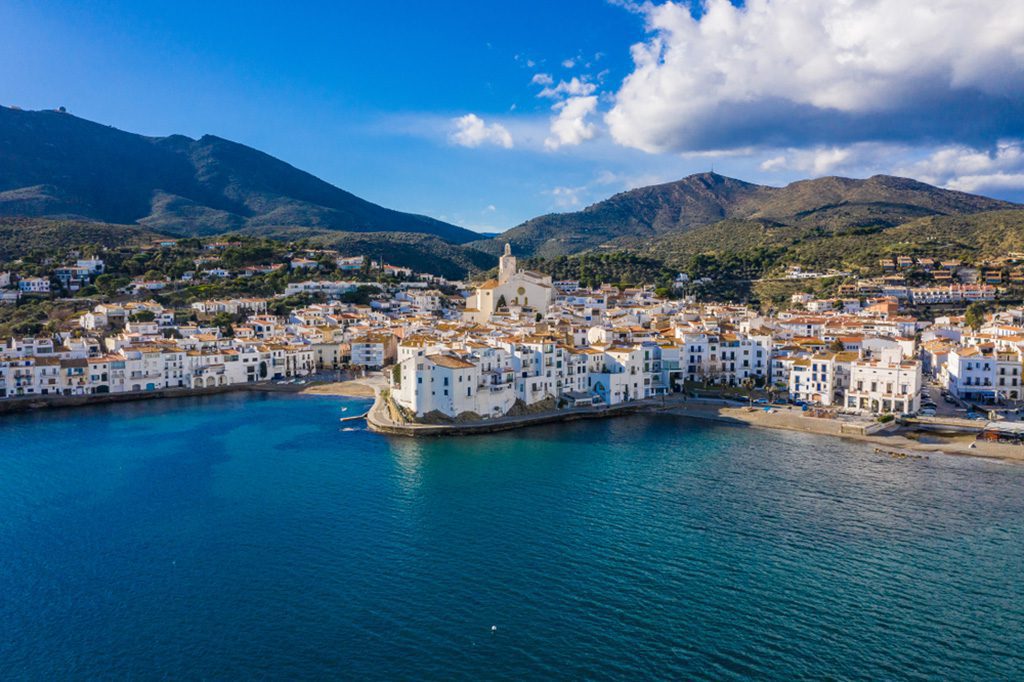
An amazing aerial panorama of Cadaques, a small city by the sea in Spain. Image source: Iryna Kalamurza/Shutterstock.com
Cadaques is a coastal town in the province of Girona, specifically along the Costa Brava. A museum has been built inside the former house of Salvador Dali, making this town famous worldwide as Dali’s birthplace. Cadaques’s major lure is the beautiful beach and the blue waters of the Mediterranean Sea, but the town’s tiled pathways take you to quaint seafood restaurants and local stores.
4. Setenil de las Bodegas
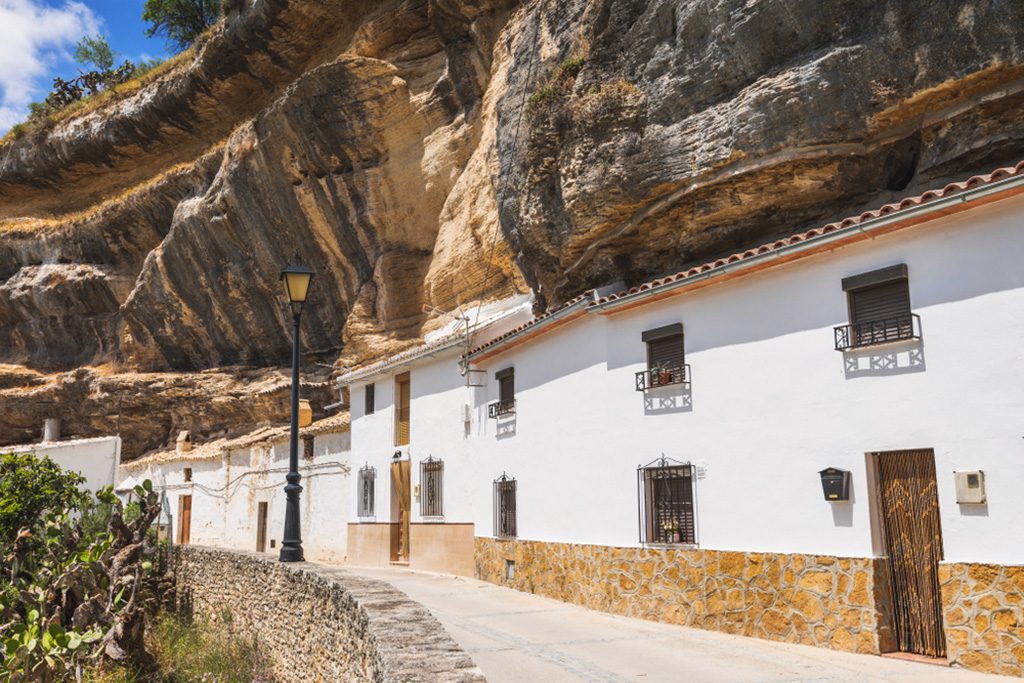
A beautiful white village with houses built into the cliffs in Andalusia, Spain. Image source: Kite_rin/Shutterstock.com
Because so many of its structures were built below ground level in the rock of a canyon, this little town in Cádiz has gained international renown. Setenil de las Bodegas was constructed on the edge of a river canyon along the Rio Trejo. The gorge’s limestone was used as an exterior roof wall. The inhabitants have been using caves for shelter for thousands of years, and this village is just a continuation of that. You can only do this in Setenil de las Bodegas, but you should eat at one of the restaurants with an outside patio that is covered by a massive cliff.
3. Frigiliana
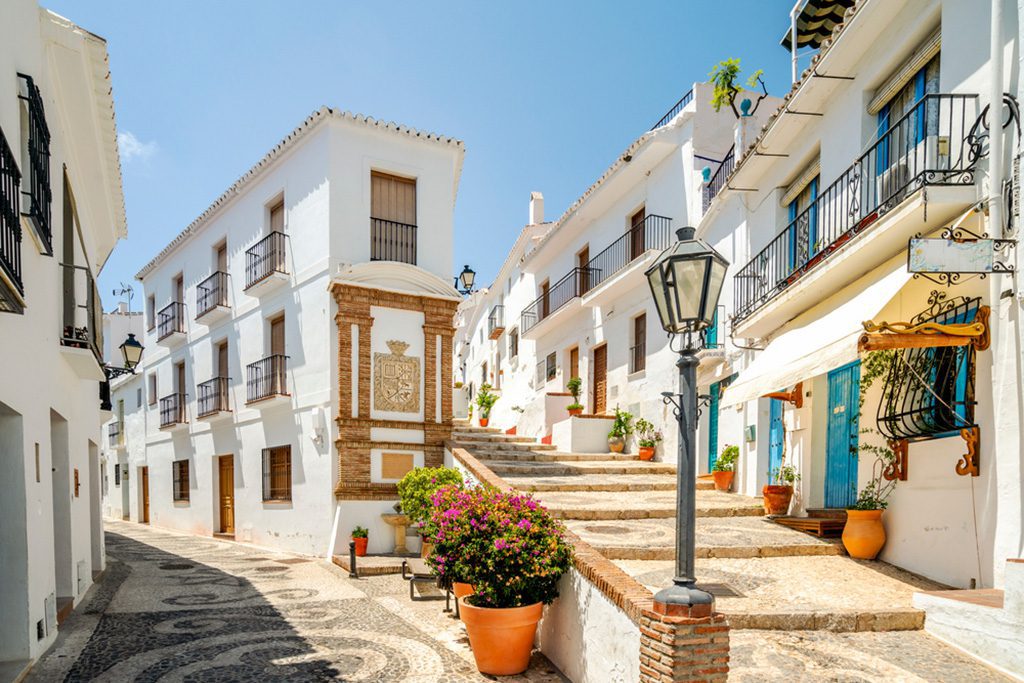
A picturesque town nestled in the mountains of Andalusia, Spain. Image source: Sopotnicki/Shutterstock.com
There is a town named Frigiliana in the mountains of Malaga. The small streets and most of the residences here are constructed in the classic Andalucian style. Frigiliana is the ideal area to take a leisurely walk while keeping an eye out for the tiled signs that tell the history of the town. Food, souvenirs, and the handicrafts offered at the weekly Thursday market can all be found on Ctra Circunvalacion, the beating center of this sleepy town. The balcony at Ctra Circunvalacion offers a breathtaking view of the surrounding countryside and the sea near Nerja.
2. Albarracin
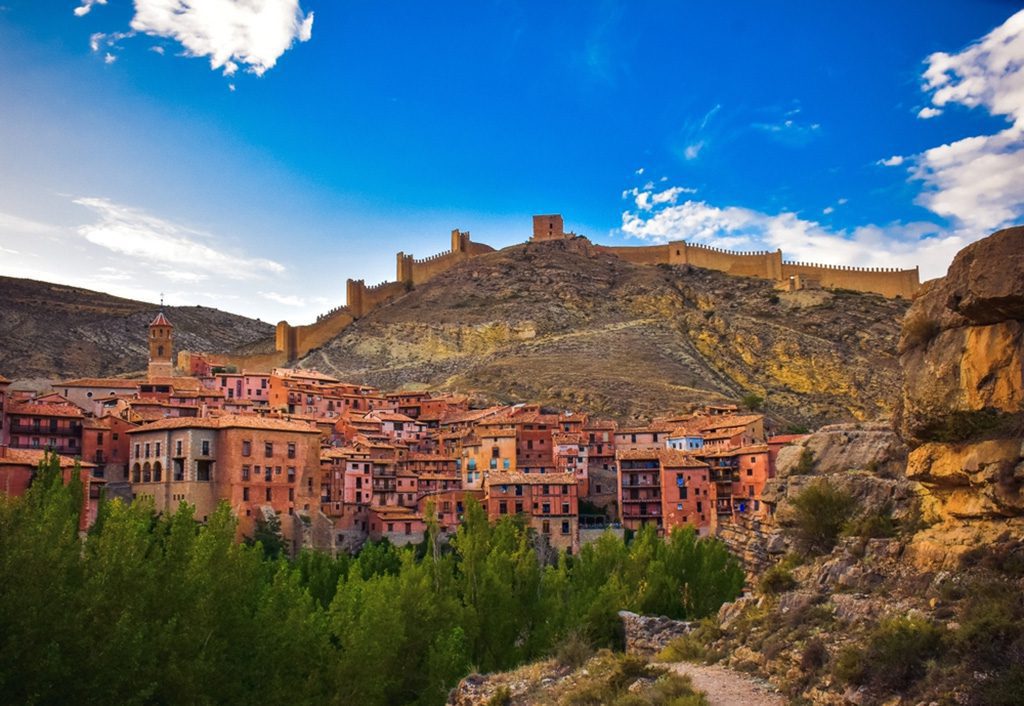
A panoramic view of the medieval town of Albarracin. Image source: HERA YEKO/Shutterstock.com
In the Aragon region, Teruel is home to the picturesque town of Albarracín. Albarracín, which was named for a prominent Moorish figure, flourished during the 12th and 14th centuries. The Albarracín Cathedral and large sections of the city’s fortifications are only two examples of the city’s historic architecture that have survived to the present day. This mountain town is very remote, and progress has apparently not yet reached there. The city’s pink buildings, which are integrated into the canyon’s natural landscape, make it one of the world’s most visually appealing places.
1. Mojacar
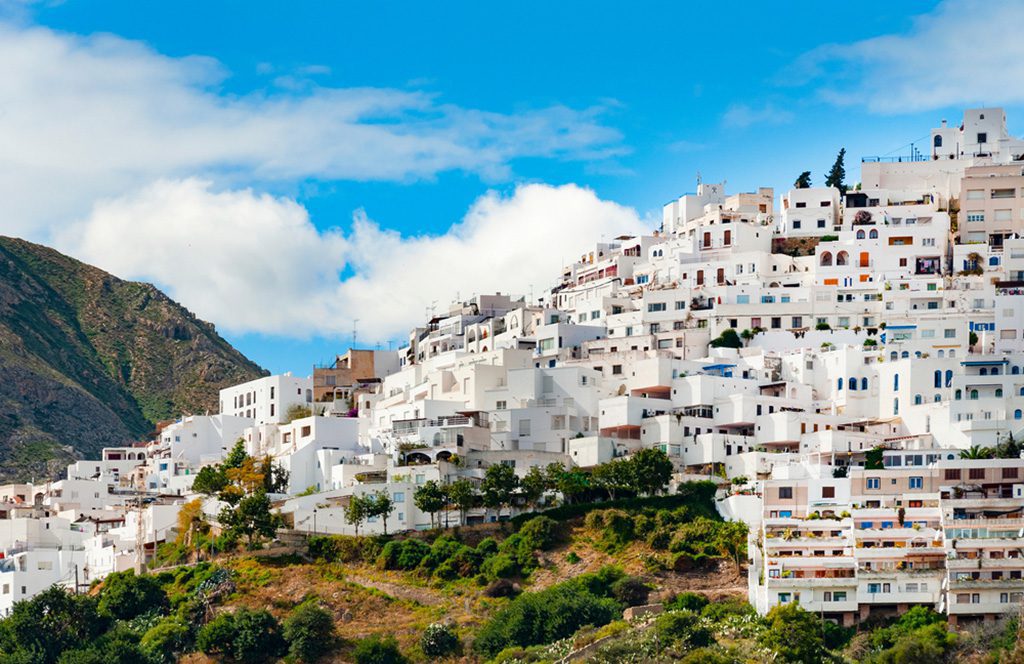
A charming village in Andalusia, Spain. Image source: Fotomicar/Shutterstock.com
Mojácar, in the Spanish province of Almeria, is a picturesque town that manages to blend the atmosphere of a beach resort with that of a traditional mountain village. Mojácar has been inhabited for almost 4,000 years, yet the majority of its present-day white buildings only date back to the 14th century. El Mirador del Castillo and the nearby Torre Pirulico, a 13th-century watchtower, are also worth a visit for their panoramic coastal views. Mojacar Playa, the local beach, is where the action is in this seaside resort.


